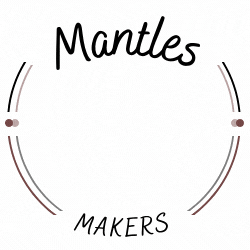They can simply use the Moralis platform to prototype, develop and deploy dApps and Web3 applications. Unlike other node providers, Moralis offers a continuous connection what is websocket used for with nodes of multiple blockchains. This allows the users to maintain an open line of communication where they constantly receive the latest information.
- If you only want to receive an update every hour, you will want to go with HTTP.
- In this section, we’ll explain the difference between HTTP and WebSockets, describe how WebSocket connections are established, and outline what WebSocket messages look like.
- Typically, the response occurs immediately, and the transaction is complete.
- Easily power any realtime experience in your application via a simple API that handles everything realtime.
- Often, people find it challenging to select the right one for their specific use case.
- The most commonly-used methods are GET, PUT, POST, DELETE, and PATCH.
Plus, the server pushes data fast and you can easily convert a regular HTTP connection into a WebSocket one. With WebSocket you have a single, long TCP socket connect that helps you connect the server and client. You will find it easier to distribute full duplex, bi-directional messages in real time. You have a minimal overhead and the connection has no latency, which is very helpful. The most customary use of WebSocket is in real-time application development wherein it assists in a continual display of data at the client end.
WebSocket-Based Real-Time Single-Page Application Development Framework
WebSocket is a framed protocol, meaning that a chunk of data (a message)
is divided into a number of discrete chunks, with the size of the chunk
encoded in the frame. The frame includes a frame type, a payload length,
and a data portion. An overview of the frame is given in RFC
6455 and reproduced
here. After the client receives the server response, the WebSocket connection is
open to start transmitting data. In this section, we’ll explain the difference between HTTP and WebSockets, describe how WebSocket connections are established, and outline what WebSocket messages look like.
The WebSocket Handbook is a resource for developers who want to learn about the WebSocket technology and how to use it to build event-driven, realtime apps. The Handbook covers the core building blocks of the WebSocket technology, its characteristics, and advantages. It also provides a step-by-step walkthrough on how to build a realtime web app with WebSockets and Node.js. This attack is called cache
poisoning, and results from the fact that we cannot control how
misbehaving proxies behave in the wild. This is especially problematic
when introducing a new protocol like WebSocket that has to interact with
the existing infrastructure of the internet. With HTTP, the client sends a request and the server returns a response.
Ably, the WebSocket platform that works reliably at any scale
Moralis is a Web3 development platform that vastly simplifies Web3 app and dApp development. By providing Speedy Nodes endpoint with WebSocket support and a fully managed, infinitely scalable Web3 backend, Moralis provides developers with the infrastructure they need to build for Web3. All major browsers, including Chrome, Safari, and Opera, provide full support for WebSockets. With over a decade of browser support behind the WebSocket protocol, developers enjoy a wide array of documentation, plugins, and troubleshooting content to make their job easier.
You might also get a pong without ever sending a ping; ignore this if it happens. Additionally, the server can decide on extension/subprotocol requests here; see Miscellaneous for details. The Sec-WebSocket-Accept header is important in that the server must derive it from the Sec-WebSocket-Key that the client sent to it. A WebSocket server is nothing more than an application listening on any port of a TCP server that follows a specific protocol. The task of creating a custom server tends to scare people; however, it can be straightforward to implement a simple WebSocket server on your platform of choice. It may be helpful to examine the socket’s bufferedAmount attribute before attempting to close the connection to determine if any data has yet to be transmitted on the network.

